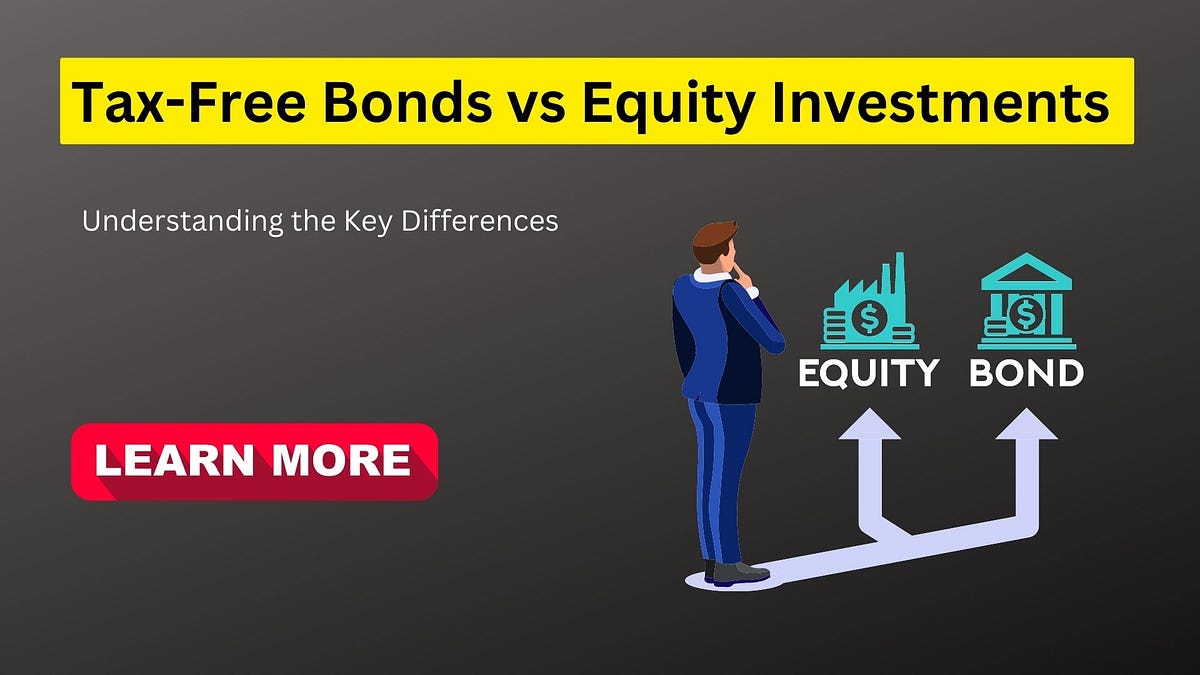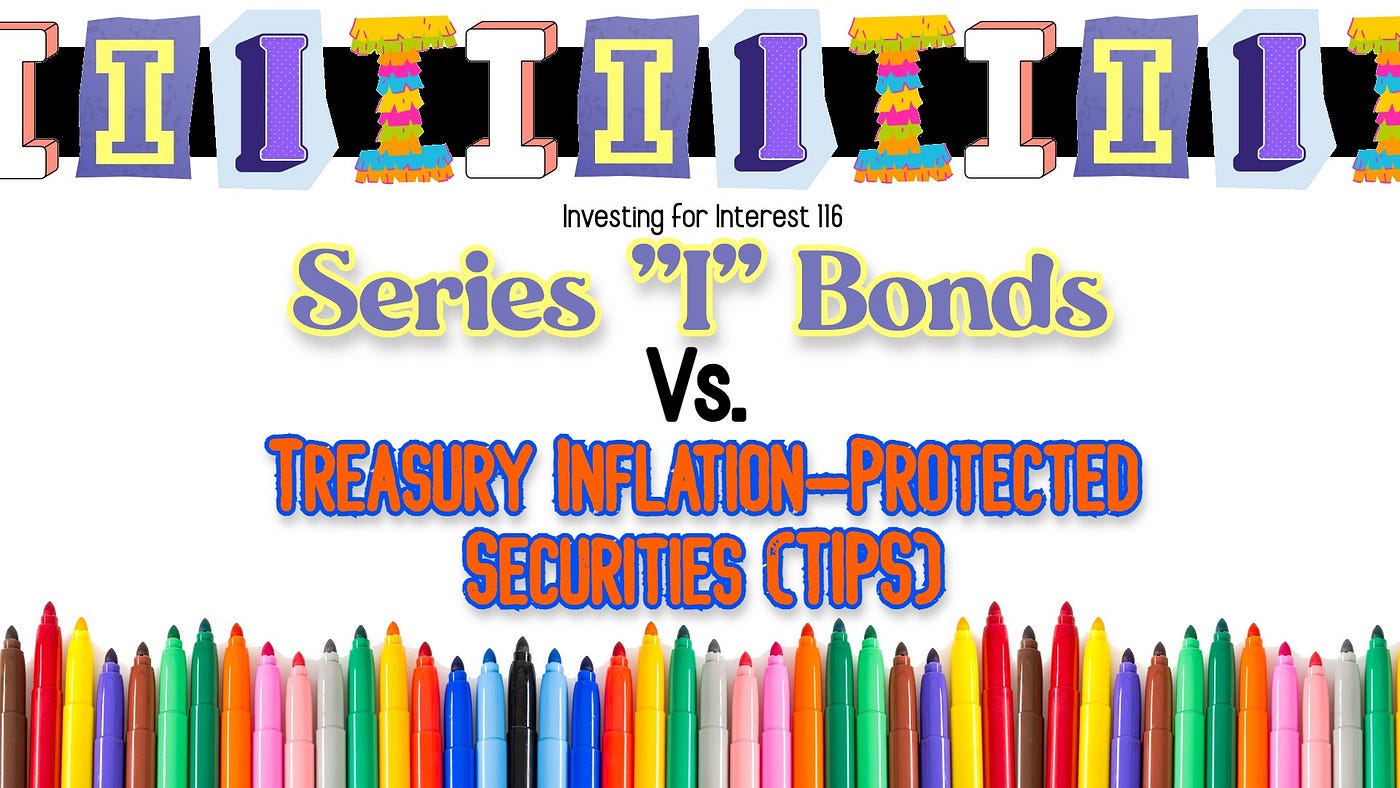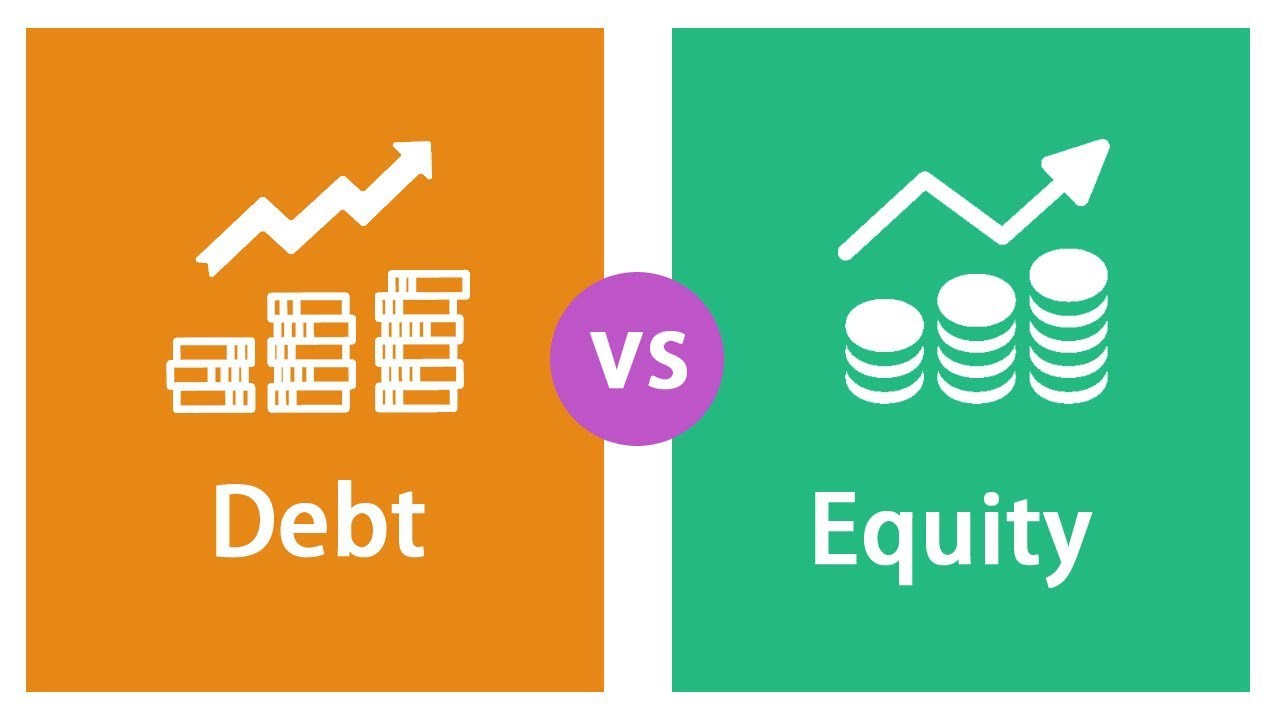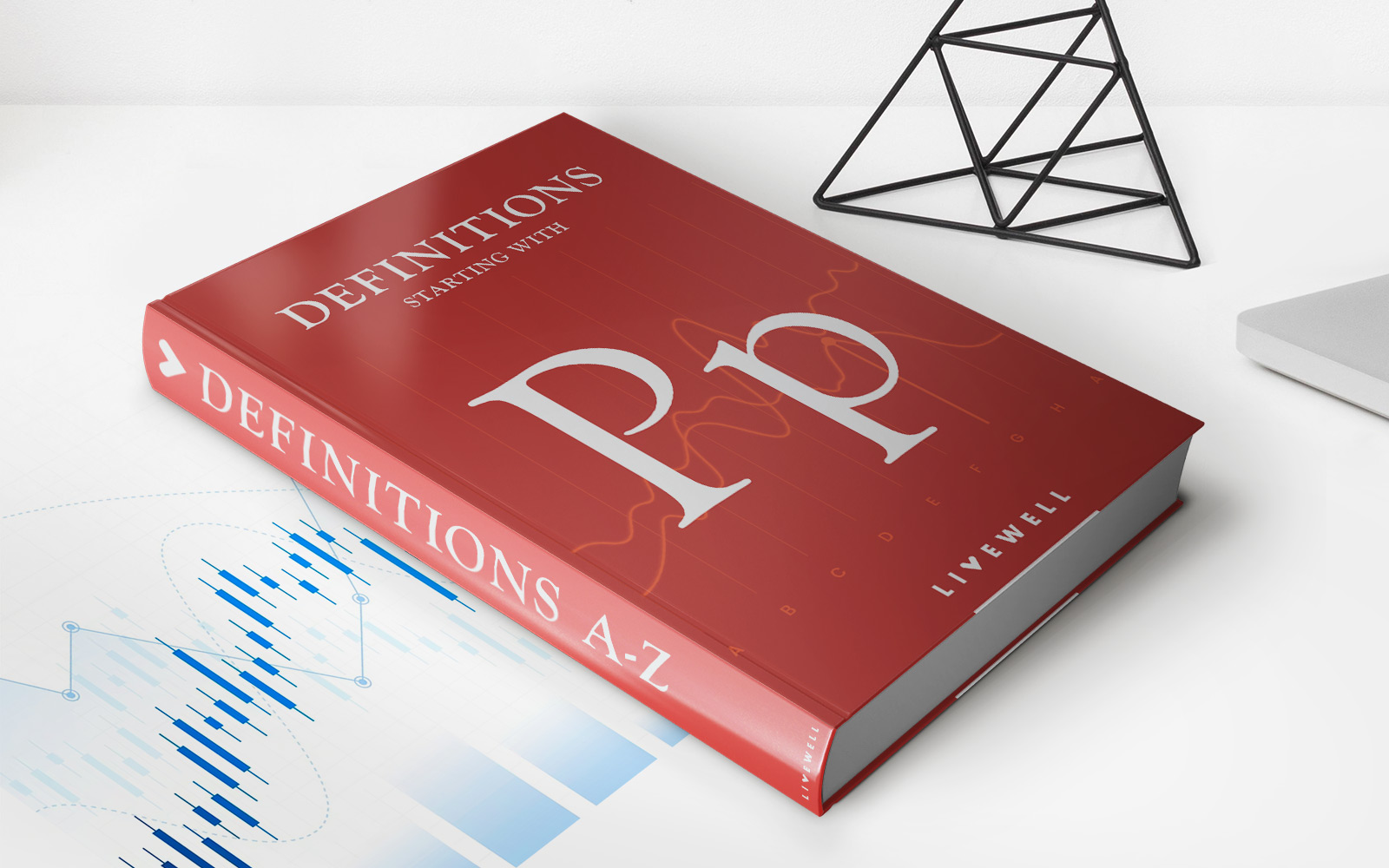

Finance
What Is Difference Between Equities And Bonds
Modified: February 23, 2024
Discover the key differences between equities and bonds in the world of finance. Gain insights on how these two investment options vary in risk, returns, and ownership structures.
(Many of the links in this article redirect to a specific reviewed product. Your purchase of these products through affiliate links helps to generate commission for LiveWell, at no extra cost. Learn more)
Table of Contents
Introduction
When it comes to investing, there are various options available in the market that can help individuals grow their wealth. Two popular investment avenues are equities and bonds. While both can provide opportunities for financial growth, they differ in many aspects, including ownership, returns, risk, and income payments.
In this article, we will explore the key differences between equities and bonds, helping you understand the characteristics of each asset class and their potential impact on your investment portfolio.
Equities, also known as stocks or shares, represent ownership in a company. When you purchase equities, you become a shareholder and have a claim on the company’s assets and earnings. Your returns from equities come in the form of capital appreciation and dividend payments.
Bonds, on the other hand, are debt instruments issued by governments or corporations to raise capital. By investing in bonds, you become a lender to the issuer. Bondholders receive fixed interest payments, typically known as coupon payments, and the principal amount is returned at maturity.
Understanding the differences between equities and bonds is crucial for investors, as it helps them make informed decisions based on their risk appetite, investment goals, and time horizon.
It’s important to note that investing in either equities or bonds has its pros and cons, and a well-diversified portfolio may include a mix of both asset classes.
Definition of Equities
Equities, also known as stocks or shares, represent ownership in a company. When you invest in equities, you become a shareholder and have a proportional claim on the company’s assets, earnings, and voting rights.
Buying equities means that you are buying a part of the company. This means that your returns from equities are based on the performance of the company. If the company does well and its value increases, the value of your equities will also increase. On the other hand, if the company performs poorly, your equities may decrease in value.
There are different types of equities available in the market, such as common stocks and preferred stocks. Common stocks represent the majority of equities and give shareholders voting rights in the company’s decisions. Preferred stocks, on the other hand, offer fixed dividend payments but usually do not include voting rights.
Investing in equities can provide potential for long-term capital appreciation. As the company grows and generates profits, the value of its stocks can increase, allowing investors to sell their equities at a higher price than they initially paid. Additionally, some companies also offer dividend payments to their shareholders, which can provide an ongoing stream of income.
Equities are considered to be riskier than bonds as their returns are not fixed and can fluctuate based on market conditions, company performance, and other external factors. However, equities also have the potential for higher returns compared to bonds, making them attractive to investors who are willing to accept higher levels of risk in exchange for potential growth.
Investors can purchase equities directly through a brokerage account or indirectly through mutual funds, exchange-traded funds (ETFs), or retirement accounts like IRAs and 401(k)s. It’s important to note that investing in individual equities requires careful research and analysis to identify companies with solid financials, growth potential, and a competitive advantage in their industry.
Definition of Bonds
Bonds are debt instruments issued by governments, municipalities, or corporations to raise capital. When you invest in a bond, you are essentially lending money to the issuer in exchange for regular interest payments and the return of the principal amount at maturity.
Unlike equities, bonds offer a fixed income stream to investors. This income comes in the form of periodic interest payments, known as coupon payments, which are usually paid semi-annually or annually. The interest rate, or coupon rate, is determined at the time of issuance and remains fixed throughout the life of the bond.
Bonds have specific maturity dates, which can range from a few years to several decades. At maturity, the issuer repays the bondholder the face value, also known as the par value or principal amount, of the bond. This means that if you hold a bond until maturity, you will receive the full amount you initially invested.
Bonds are considered less volatile than equities, as their returns are not directly tied to the performance of a company. Instead, the returns are determined by the interest rate and the creditworthiness of the issuer. However, it’s important to note that bonds are not entirely risk-free. The risk associated with bonds primarily includes interest rate risk, credit risk, and inflation risk.
Investors who prioritize stability and regular income often include bonds in their investment portfolios. Bonds can provide a steady stream of income, making them attractive to conservative investors or those nearing retirement who seek predictable returns.
There are different types of bonds available in the market, including government bonds, corporate bonds, municipal bonds, and international bonds. Government bonds are issued by the government and are considered the least risky, as they are backed by the full faith and credit of the issuing government. Corporate bonds, on the other hand, are issued by corporations and offer higher yields but also higher credit risk. Municipal bonds are issued by state and local governments to fund public projects, while international bonds are issued by foreign governments or corporations.
Investors can purchase bonds directly from the issuer or through the secondary market. Additionally, bond investments can be made through mutual funds, ETFs, or bond-focused investment portfolios.
Ownership and Returns
One of the key differences between equities and bonds is the ownership structure and the nature of returns they offer to investors.
When you invest in equities, you become a partial owner of the company. As a shareholder, you have a claim on the company’s assets and earnings. Your ownership stake gives you the right to vote on important company matters, such as board elections and major corporate decisions. This ownership structure provides investors with the potential to benefit from the company’s long-term growth and profitability.
The returns from equities come in the form of capital appreciation and dividends. Capital appreciation refers to the increase in the value of the stocks over time. If the company performs well and its stock price rises, investors can sell their equities at a higher price than what they initially paid, resulting in a profit. Dividends, on the other hand, are a portion of the company’s profits distributed to shareholders. While not all companies offer dividends, they can provide an ongoing stream of income to investors.
In contrast, bonds represent a debt obligation of the issuer, whether it’s the government, municipality, or corporation. When you invest in bonds, you become a lender rather than an owner. Bondholders have a contractual right to receive regular interest payments, known as coupon payments, along with the return of the principal amount at maturity.
Bonds are known for their fixed income nature, meaning that the interest payments are predetermined at the time of issuance and remain constant throughout the life of the bond. This fixed income feature makes bonds attractive to investors who seek stable and predictable returns. However, it’s important to note that bond prices can still fluctuate in the secondary market based on changes in interest rates and the creditworthiness of the issuer.
In terms of returns, equities have the potential for higher long-term growth compared to bonds. While equities carry more risk and volatility, they can offer greater rewards. Bond returns, on the other hand, are generally more predictable and stable but tend to be lower than potential equity returns.
Overall, the ownership structure and the potential returns from equities and bonds differ significantly. Equities offer ownership rights and the potential for capital appreciation and dividends, while bonds provide fixed income through interest payments and the return of the principal at maturity.
Risk and Volatility
Risk and volatility are important factors to consider when it comes to investing in equities and bonds. While both asset classes carry their own set of risks, they differ in terms of their level of volatility and the factors that influence their price movements.
Equities are generally considered riskier than bonds. The value of equities is influenced by various factors, including the company’s financial performance, industry trends, market conditions, and investor sentiment. As a result, equity prices can experience significant fluctuations in the short term. Market volatility, news events, and economic factors can all contribute to drastic price changes for stocks.
Equities expose investors to both systematic risk, which is related to overall market movements, and unsystematic risk, which is specific to a particular company or industry. This means that investing in individual stocks carries company-specific risks, such as poor management decisions or industry disruptions. However, by diversifying their equity investments across different companies and industries, investors can mitigate some of these risks.
On the other hand, bonds are generally considered less volatile than equities. The value of a bond is influenced by changes in interest rates. When interest rates rise, bond prices tend to fall, and vice versa. This relationship between interest rates and bond prices is known as interest rate risk. The longer the maturity of a bond, the more susceptible it is to interest rate fluctuations.
Bonds also carry credit risk, which is the risk associated with the issuer’s ability to repay the borrowed funds. If the issuer’s creditworthiness deteriorates, for example, due to a downgrade in its credit rating, the value of the bond may decline. Investors can assess credit risk by examining the issuer’s financial health, credit rating, and market perception of the issuer’s creditworthiness.
While bonds are generally considered less risky than equities, they are not risk-free. Investors should be aware of the potential for default risk, which is the risk that the issuer may fail to make interest payments or repay the principal amount at maturity. Investing in bonds issued by governments or highly rated entities can help mitigate default risk.
It’s important for investors to evaluate their risk tolerance, investment goals, and time horizon when considering the risk and volatility associated with equities and bonds. Equities offer the potential for higher returns but also come with higher volatility and the possibility of losing some or all of the investment. Bonds, on the other hand, provide more stability and predictable income but may offer lower returns.
Ultimately, diversification across asset classes and careful risk management can help investors achieve a balanced portfolio that aligns with their risk tolerance and investment objectives.
Income and Interest Payments
One of the key differences between equities and bonds lies in the way they generate income for investors. Equities provide income through dividends, while bonds offer interest payments.
Equities, as mentioned earlier, represent ownership in a company. When a company generates profits, it has the option to distribute a portion of those profits to its shareholders in the form of dividends. Dividends are typically paid on a regular basis and can provide a steady stream of income for equity investors. However, it’s important to note that not all companies pay dividends, and dividend amounts can vary based on the company’s financial performance and management’s decision.
Bonds, on the other hand, provide a fixed income stream through interest payments, also known as coupon payments. The interest rate of a bond, or coupon rate, is determined at the time of issuance and remains fixed throughout the life of the bond. Bondholders receive periodic interest payments based on the coupon rate and the principal amount invested. These interest payments are typically paid semi-annually or annually, depending on the terms of the bond.
The predictability of interest payments is one of the advantages of investing in bonds, as it provides investors with a consistent income stream. This feature makes bonds especially appealing to investors who rely on regular income, such as retirees or those seeking stable cash flow.
It’s important to note that the income generated from equities and bonds can be taxed differently. Dividend income from equities is typically subject to income tax, with different tax rates based on factors such as the type of dividend and the investor’s tax bracket. Bond interest payments are also taxed as ordinary income, but certain types of bonds, like municipal bonds, may offer tax advantages by providing tax-exempt interest at the federal or state level.
Investors should consider their income needs, tax implications, and investment goals when deciding between equities and bonds. If regular and potentially growing income is a priority, dividend-paying equities may be a preferred option. On the other hand, if stable and predictable income is the goal, bonds can provide a consistent stream of interest payments.
A well-diversified portfolio may include a combination of equities and bonds to balance the need for income and growth potential.
Market Trading and Liquidity
Market trading and liquidity are important considerations for investors when choosing between equities and bonds. These factors determine how easily an asset can be bought or sold in the market and the potential impact on its price.
Equities are traded on stock exchanges, such as the New York Stock Exchange (NYSE) or NASDAQ. These exchanges provide a centralized marketplace where buyers and sellers can trade shares of publicly listed companies. Equities are highly liquid assets, meaning they can be bought and sold quickly with minimal impact on their prices. The high trading volume and the presence of market makers facilitate liquidity, ensuring that investors can enter or exit their positions at market-determined prices.
Equity markets also offer a variety of trading options, including market orders, limit orders, and stop orders. Market orders execute trades immediately at the current market price, while limit orders allow investors to set a specific price at which they are willing to buy or sell. Stop orders are used to trigger a trade once the market price reaches a certain level.
In contrast, bonds trade in the bond market, which is a decentralized network of buyers and sellers. Unlike equities, the bond market is not as transparent or centralized. Each bond issue may have its own trading platform and specific market participants. This fragmentation can impact the liquidity of individual bonds.
While some bonds, particularly those issued by governments or highly rated entities, have active and liquid secondary markets, others may have limited trading volume. Less liquid bonds may be challenging to sell or buy at desired prices, potentially resulting in higher transaction costs or wider bid-ask spreads.
Additionally, the liquidity of bonds can vary based on factors such as the creditworthiness of the issuer, the bond’s maturity, and prevailing market conditions. Bonds with shorter maturities are generally more liquid compared to longer-term bonds.
It’s worth noting that the liquidity of both equities and bonds can be impacted during periods of market stress or extreme volatility. In such situations, liquidity may dry up, and it can be more challenging to execute trades at desired prices.
Investors should consider their investment horizon, trading preferences, and liquidity needs when deciding between equities and bonds. If liquidity and the ability to quickly buy or sell an asset are important, equities provide a more liquid market with readily available trading options. On the other hand, if liquidity needs are less immediate, and investors prioritize stable income and fixed returns, bonds can still provide value despite their potentially lower liquidity.
Time Horizon and Investment Goals
The time horizon and investment goals play a crucial role in determining whether equities or bonds are more suitable for an investor’s portfolio. Understanding these factors can help align investments with specific objectives and risk tolerance.
Equities are typically considered long-term investments. They offer the potential for higher returns but come with greater volatility and short-term price fluctuations. Investing in equities is suitable for investors with a longer time horizon, as they allow for the potential growth of capital over an extended period. It is important to note that equity investments can be subject to market volatility, and short-term market fluctuations may not accurately reflect the long-term potential of the underlying company.
On the other hand, bonds are often seen as more conservative investments with a focus on preserving capital and generating income. They can be suitable for investors with shorter time horizons or those seeking lower-risk options. Bonds provide predictable income through interest payments and are generally less susceptible to the short-term market fluctuations that equities experience. This makes bonds attractive to investors who have a lower risk tolerance or have specific income needs over a defined period.
Investment goals also influence the choice between equities and bonds. For investors seeking capital appreciation and growth over time, such as those focused on saving for retirement or long-term financial goals, equities may be a more appropriate option. Equities have historically outperformed bonds over the long run, although past performance is no guarantee of future results.
For investors with a primary goal of capital preservation, consistent income generation, or a desire for a more stable investment with a predictable stream of income, bonds may be a better fit. Bonds provide fixed income through regular interest payments and the eventual return of the principal at maturity. This makes bonds appealing to conservative investors or those nearing retirement who prioritize stability and regular income over potential growth.
It is important for investors to assess their individual time horizons, risk tolerances, and investment goals before deciding on the appropriate allocation between equities and bonds. A well-diversified portfolio may include a mix of both asset classes that aligns with the investor’s specific objectives, risk tolerance, and investment time frame.
Tax Implications
Tax implications are an important consideration when comparing equities and bonds. The tax treatment of investment returns can vary depending on the specific asset class and the investor’s tax situation. Understanding the tax implications is crucial for making informed decisions and optimizing investment returns.
Equities are subject to different tax rules compared to bonds. The primary tax implications of equities come from capital gains and dividends.
Capital gains are generated when you sell equities for a higher price than what you initially paid. Depending on how long you hold the equities, these gains can be categorized as short-term or long-term capital gains. Short-term capital gains are taxed at ordinary income tax rates, which are typically higher, while long-term capital gains are subject to lower tax rates. The tax rate for long-term capital gains is determined based on the investor’s income level and the holding period of the equities.
Dividends received from equities are also subject to taxation. Dividends can be classified as qualified dividends or non-qualified dividends, depending on certain criteria. Qualified dividends are taxed at long-term capital gains rates, while non-qualified dividends are taxed at the individual’s ordinary income tax rates. It’s important to note that not all equities pay dividends, and the taxation of dividends can vary based on the investor’s tax bracket.
Bonds also have tax implications, primarily related to interest income. Bond interest payments are generally taxed as ordinary income at the investor’s marginal tax rate. However, certain types of bonds, such as municipal bonds, may offer tax advantages. Interest income from municipal bonds is typically exempt from federal taxes and may also be exempt from state and local taxes, depending on the investor’s place of residence.
The tax advantage of municipal bonds makes them appealing to investors in higher tax brackets seeking tax-efficient income. However, it’s important to analyze the after-tax yield of municipal bonds compared to taxable bonds to determine the overall benefit.
It’s worth noting that tax laws can change, and the impact of taxes on investment returns can vary based on individual circumstances. Consulting with a tax advisor or financial professional is recommended to understand the specific tax implications of equity and bond investments based on your income, tax bracket, and jurisdiction.
Ultimately, tax considerations should be an integral part of an investor’s decision-making process when selecting between equities and bonds, as they can significantly impact the after-tax return on investment.
Diversification and Portfolio Allocation
Diversification and portfolio allocation are key principles in building a well-balanced investment strategy. Both equities and bonds play important roles in achieving diversification within an investor’s portfolio.
Diversification refers to spreading investments across different asset classes, sectors, and geographic regions to reduce risk and potential losses. By combining assets with different risk and return characteristics, investors can potentially enhance their portfolio’s overall performance and reduce exposure to any single investment.
Equities and bonds have different risk-return profiles, making them complementary assets for portfolio diversification. Equities tend to have higher return potential but also higher volatility, while bonds offer stability and income generation with lower potential for capital appreciation.
Investing in both equities and bonds can help to reduce the overall risk of the portfolio. The two asset classes often have low correlation, meaning that they may react differently to market conditions. When equities have a downswing, bonds may act as a stabilizer, helping to offset potential losses in the portfolio. This diversification benefit can provide more consistent returns over time.
The allocation between equities and bonds may be determined by an investor’s risk tolerance, investment goals, and time horizon. Generally, younger investors with a longer time horizon and higher risk tolerance may have a larger allocation to equities to benefit from long-term growth potential. On the other hand, investors closer to retirement or with lower risk tolerance might have a higher allocation to bonds for capital preservation and income generation.
It’s important to periodically review and rebalance the portfolio allocation to maintain the desired diversification and risk profile. As market conditions change, the weightings of equities and bonds within the portfolio can shift, potentially moving outside of the desired asset allocation percentages. Rebalancing involves adjusting the portfolio back to the target allocation by buying or selling assets as necessary.
Additionally, within each asset class, investors can further diversify by investing in different sectors, industries, and geographies. By spreading investments across a range of companies and regions, investors can reduce the potential impact of any single company or geographic event on their portfolio.
It’s important to note that no investment strategy can completely eliminate the risk of loss, and diversification does not guarantee profits or protect against market downturns. However, it can help manage risk and improve the potential for long-term returns.
Working with a financial advisor or investment professional can help investors determine the optimal diversification and portfolio allocation based on their unique circumstances and investment goals.
Conclusion
Equities and bonds are two prominent asset classes that offer different characteristics and opportunities for investors. Understanding the differences between these investment options is essential for building a well-structured and diversified portfolio.
Equities provide ownership in a company, offering the potential for long-term growth and capital appreciation. They can be more volatile and carry higher risk, but also offer higher potential returns. Dividend payments from equities can provide additional income for investors.
Bonds, on the other hand, represent debt obligations and provide fixed income in the form of interest payments. Bonds are generally more stable investments with lower risk, making them attractive to conservative investors or those seeking consistent income. The choice of bonds can also allow for potential tax advantages, such as with municipal bonds.
When considering equities and bonds, factors such as time horizon, investment goals, risk tolerance, and tax implications should come into play. Younger investors with a higher risk appetite and longer investment horizon may be more inclined to allocate a higher percentage of their portfolio towards equities, while those seeking income or capital preservation may focus on bonds.
It’s important to note that a diversified portfolio can mitigate risk and potentially enhance returns. Combining equities and bonds in a portfolio helps to balance potential growth and stability, with the two asset classes often exhibiting low correlation.
Regular portfolio monitoring and periodic rebalancing are essential to maintain the desired allocation and adapt to changing market conditions. Investors should also consider the impact of taxes on their investment returns, as the tax treatment of equities and bonds varies.
In conclusion, both equities and bonds offer unique benefits and considerations for investors. The optimal allocation between the two will depend on individual financial goals, risk tolerance, and investment horizon. By carefully evaluating these factors and seeking professional advice when needed, investors can construct a well-diversified portfolio that aligns with their objectives and helps them navigate the dynamic world of investing.














